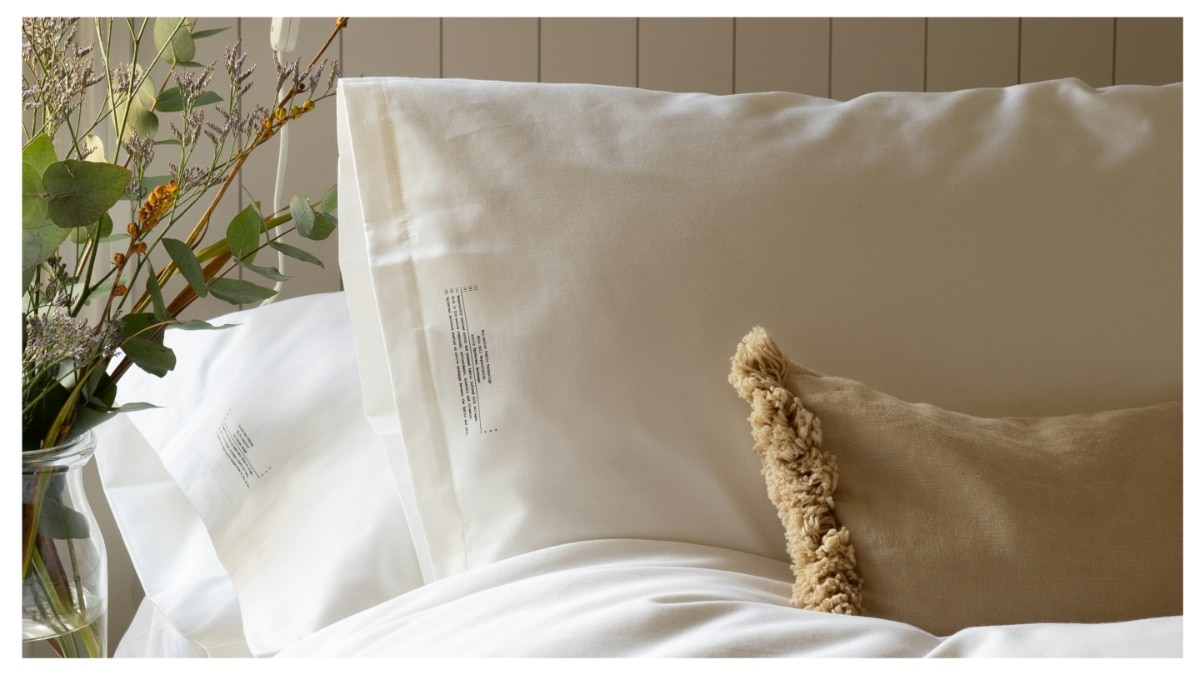Are you seeing frequent skin breakouts or acne? Spending time on a long skincare routine might not help, as a recent study has found that our pillowcases carry several times more bacteria than a toilet seat. The National Sleep Foundation has revealed that after one week, pillowcases and sheets contain between three million and five million CFUs (colony-forming units) per square inch. By the fourth week, both areas of your sleeping space have almost 12 million CFUs.
Common types of bacteria found in bedding include gram-negative rods, gram-positive rods, bacilli, and gram-positive cocci. Some of these bacteria can potentially cause infections, while others are less harmful. When To Wash Pillow Covers? Pillow covers washed after a week have over 17 thousand times the number of bacteria as a toilet seat, it added.

Going to bed with wet hair only makes the case worse as the moisture from damp hair can transfer onto the pillow, and this creates "the perfect environment for unwanted fungi, bacteria and more." Experts suggest first drying your hair before bedtime and, second, washing your pillowcases once a week. Dermatologists suggest the one-week wash rule to prevent any dirt, oil, drool or sweat buildup from accumulating on your pillowcase and transferring to your skin, causing breakouts or irritation.
The presence of allergens, such as dust mites, mold, or pet dander, can accumulate over time and cause respiratory issues, allergies, or even exacerbate existing conditions. It is recommended to replace pillows more often than a mattress, though how often depends on your type of pillow. Experts also advise to consider replacing a mattress every seven years or when it causes discomfort.
Good hygiene practices, such as showering before bed and cleaning bedding after i.
Your Pillow Covers Carry More Bacteria Than Toilet Seat. Know How Frequently To Wash Them

Are you seeing frequent skin breakouts or acne? Spending time on a long skincare routine might not help, as a recent study has found that our pillowcases carry several times more bacteria than a toilet seat.The National Sleep Foundation has revealed that after one week, pillowcases and sheets contain between three million and five million CFUs (colony-forming units) per square inch. By the fourth week, both areas of your sleeping space have almost 12 million CFUs. Common types of bacteria found in bedding include gram-negative rods, gram-positive rods, bacilli, and gram-positive cocci. Some of these bacteria can potentially cause infections, while others are less harmful.When To Wash Pillow Covers?Pillow covers washed after a week have over 17 thousand times the number of bacteria as a toilet seat, it added. Going to bed with wet hair only makes the case worse as the moisture from damp hair can transfer onto the pillow, and this creates "the perfect environment for unwanted fungi, bacteria and more." Experts suggest first drying your hair before bedtime and, second, washing your pillowcases once a week. Dermatologists suggest the one-week wash rule to prevent any dirt, oil, drool or sweat buildup from accumulating on your pillowcase and transferring to your skin, causing breakouts or irritation.The presence of allergens, such as dust mites, mold, or pet dander, can accumulate over time and cause respiratory issues, allergies, or even exacerbate existing conditions.It is recommended to replace pillows more often than a mattress, though how often depends on your type of pillow.Experts also advise to consider replacing a mattress every seven years or when it causes discomfort. Good hygiene practices, such as showering before bed and cleaning bedding after i










_updates.jpg)




